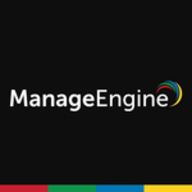

Microsoft Configuration Manager and ManageEngine Endpoint Central are competitors in the field of endpoint management. Microsoft Configuration Manager has a dominant edge due to its seamless application deployment and robust reporting capabilities.
Features:Microsoft Configuration Manager offers a centralized console for deployment, application updates, and OS imaging while seamlessly integrating across Microsoft products. ManageEngine Endpoint Central includes powerful patch management, asset management, and remote access capabilities, appealing to smaller organizations due to its affordability and user-friendly interface.
Room for Improvement:Microsoft Configuration Manager could benefit from improved performance in application deployment, better integration with PowerShell, and increased support for non-Microsoft devices. Users of ManageEngine Endpoint Central suggest enhancements in integration with Linux, more robust technical support, and better features for larger enterprises.
Ease of Deployment and Customer Service:Both products provide on-premises and cloud deployment options, with Microsoft Configuration Manager using the wider Microsoft ecosystem. However, ManageEngine Endpoint Central is often found to be easier to deploy and user-friendly. While Microsoft's technical support is detailed but occasionally slow, ManageEngine offers faster yet sometimes less comprehensive assistance.
Pricing and ROI:Microsoft Configuration Manager is considered expensive, especially for small businesses, offering a good ROI due to its extensive features and integration with Microsoft services. ManageEngine Endpoint Central has a more budget-friendly pricing model, attractive to small and medium-sized businesses, with good ROI achieved through automation and efficient endpoint management.
The support team is available via chat and will create a ticket if they're not available, providing assistance even for small issues.
While they are generally good, there could be improvements in their response times to align with our SLAs.
Their response time and first-level support quality need improvement.
For technical support from Microsoft, I would rate them a nine.
The product is suitable for our size, handling 800 devices.
ManageEngine prefers not to display any information if it cannot be properly gathered.
We haven't encountered issues very frequently.
The product is very stable, especially with the cloud version.
There were misconfigurations by our team rather than issues with the product itself.
It would be great if there was a smarter solution to address this issue.
Endpoint Central does not support Linux, which makes it challenging to patch Linux machines using commands.
The patch management module could be simplified as it is currently a bit complicated.
A better command line interface for Microsoft Configuration Manager would be an additional feature I would to see in the future to make it closer to a perfect score.
Improvements are needed for servers. Servers are still not getting it properly, so we could add the servers in Microsoft Configuration Manager for things such as OS deployment and Autopilot as well.
The pricing is cheaper compared to other MDM products.
ManageEngine products offer reasonable prices for their product quality.
The pricing of ManageEngine Endpoint Central is quite decent.
The setup cost is considered sufficient.
The pricing for Microsoft Configuration Manager is okay for me.
The patch management feature is effective and allows us to see what new patches are available and which machines are affected.
ManageEngine Endpoint Central is straightforward to use and implement.
The system misconfiguration part of vulnerability management is quite good, providing detailed insights into endpoint misconfigurations.
If I want to get a fetch report for anything, such as hardware-related issues or group policy-related issues, I need to fetch the report by using SCCM's scripting language and remediation part.
The most valuable features I find in Microsoft Configuration Manager are mostly patching, deploying software, deploying images, and running custom scripts.
The product valuable for deployment recovery.
| Product | Market Share (%) |
|---|---|
| ManageEngine Endpoint Central | 28.0% |
| Symantec Client Management Suite | 16.9% |
| Clarity CA | 10.2% |
| Other | 44.900000000000006% |
| Product | Market Share (%) |
|---|---|
| Microsoft Configuration Manager | 5.1% |
| Zabbix | 22.9% |
| Checkmk | 9.3% |
| Other | 62.7% |


| Company Size | Count |
|---|---|
| Small Business | 25 |
| Midsize Enterprise | 14 |
| Large Enterprise | 35 |
| Company Size | Count |
|---|---|
| Small Business | 20 |
| Midsize Enterprise | 13 |
| Large Enterprise | 64 |
ManageEngine Endpoint Central is a unified endpoint management (UEM) solution offered by ManageEngine, a division of Zoho Corporation. It is designed to help organizations efficiently manage and secure their endpoints from a centralized platform. Endpoint Central provides a comprehensive set of features and capabilities to streamline endpoint management and enhance security across diverse devices and operating systems.
ManageEngine Endpoint Central Features:
ManageEngine Endpoint Central Benefits:
Reviews from Real Users
PeerSpot user, Sr Engineer Administrator at a university, says that "Its cross-platform capabilities and the ability to do both OS-level patching and third-party patching are valuable. It is difficult to find a software product that will do all that for you out of the box, and you don't have to do any configuration other than your initial setup. Once you do that, there is a very minimalistic approach to getting it operational. You can have it up and running within a 20-minute time span."
Park Armstrong, Chief Technical and Solution Architect at Vertigo Inc., writes that ManageEngine Endpoint Central is “Helpful for identifying and filling the gaps and meeting compliance needs, but each of their product works as an independent product and lacks integration”.
Microsoft Configuration Manager streamlines IT management with features such as software deployment, patch management, and automation, centralizing operations for Windows environments. Integration with Microsoft products allows efficient oversight of workstations and servers.
Microsoft Configuration Manager provides comprehensive IT management, offering software deployment, patch management, and application pushing. Automation reduces manual tasks, ensuring consistency across systems. Centralized management enables standardized OS deployments, application updates, and configuration integrity. Integration with Microsoft products facilitates seamless operations, while hardware and software inventory, compliance reporting, and remote control functions enhance IT management. Users seek improvements in application deployment for those without deep scripting knowledge and desire better WSUS control, PowerShell and Intune integration, Linux compatibility, and user interface enhancements. Performance improvements are requested for remote user management and third-party application support.
What features enhance Microsoft Configuration Manager?Microsoft Configuration Manager is widely implemented in organizations to manage Windows workstations and servers. It is essential for deploying operating systems and applications, managing software updates, and conducting hardware and software inventories. The tool is crucial for endpoint and configuration management, ensuring compliance, and automating processes like patching and vulnerability management. Industries such as finance, healthcare, and education rely on Microsoft Configuration Manager to keep systems secure and operational, adapting it to address their specific needs and challenges in maintaining diversified IT environments.
We monitor all Client Desktop Management reviews to prevent fraudulent reviews and keep review quality high. We do not post reviews by company employees or direct competitors. We validate each review for authenticity via cross-reference with LinkedIn, and personal follow-up with the reviewer when necessary.